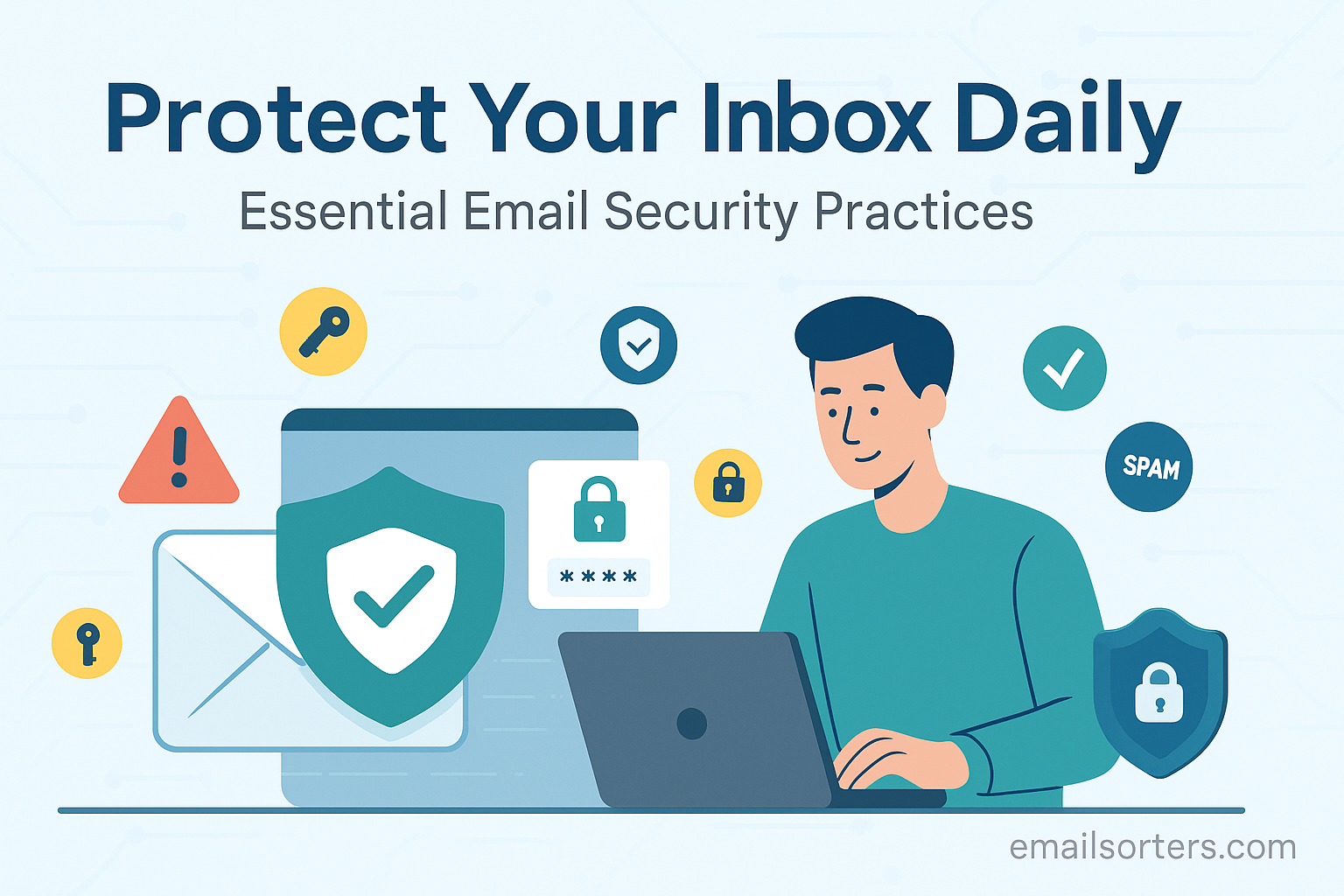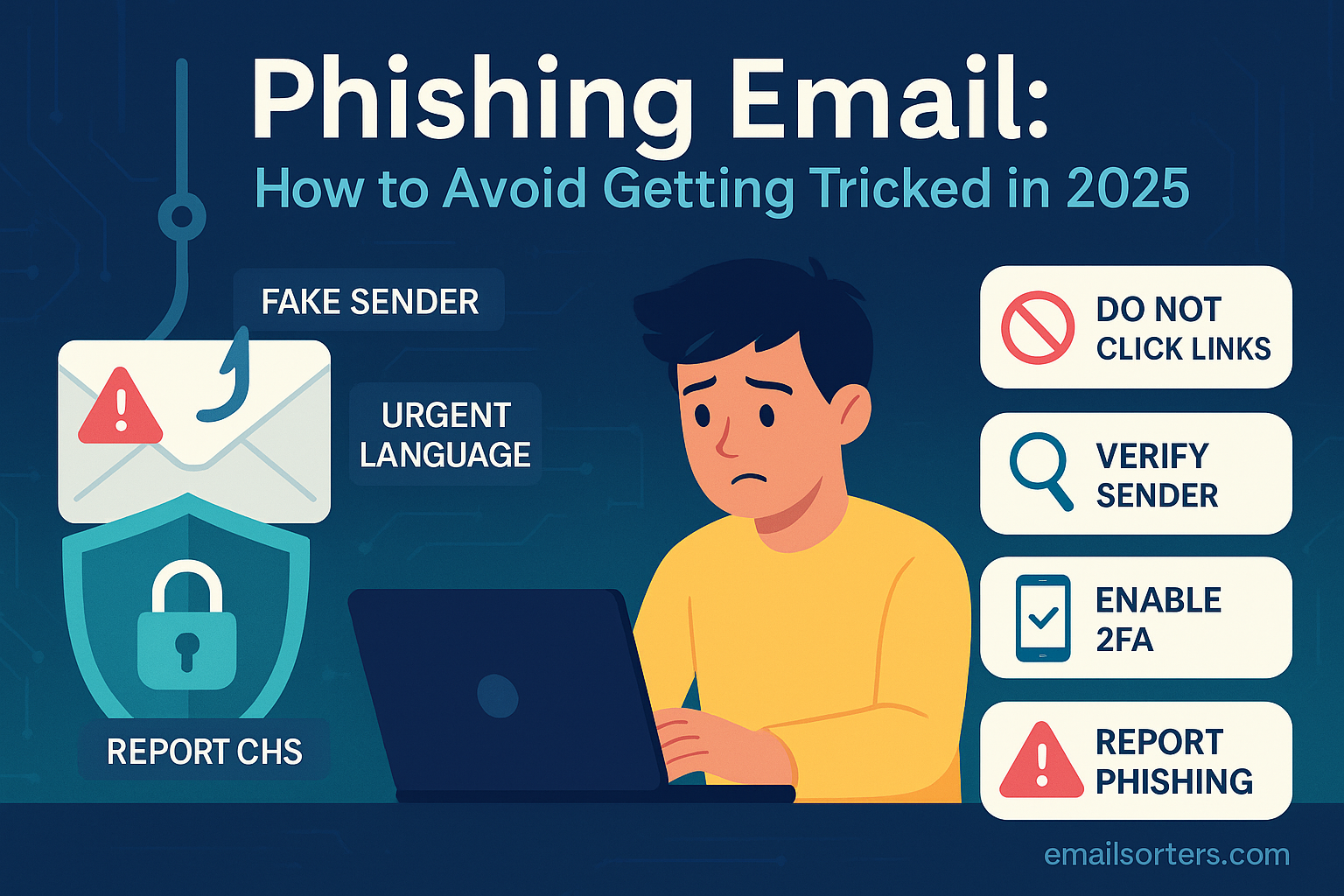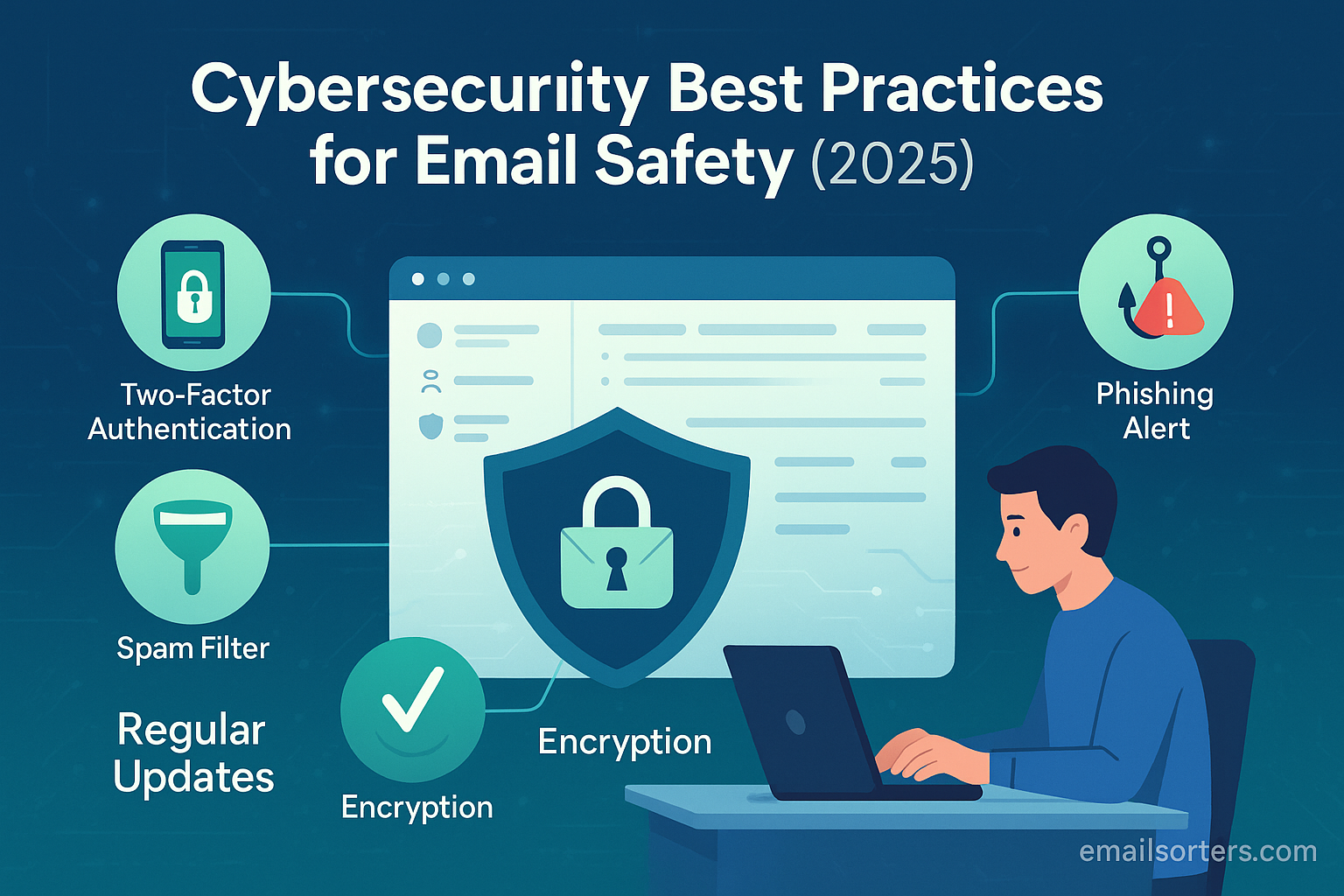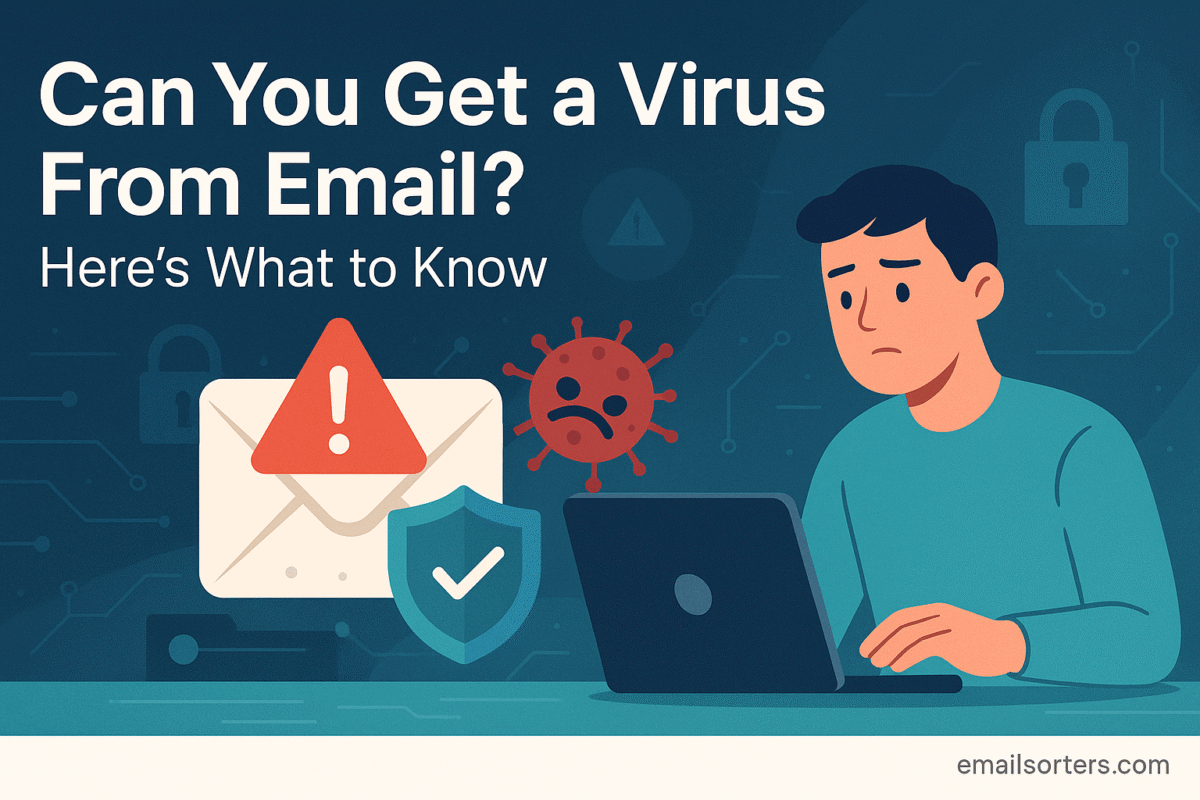Email security practices aren’t just for IT pros, they’re for anyone who wants to keep their inbox safe. Checking email is as routine as your morning coffee, but it’s also like unlocking the front door to your digital home.
In this environment, the security of your inbox is not determined by a single, complex lock but rather by a series of small, consistent, and deliberate habits. True digital safety is built through daily practice, transforming security from an occasional task into a natural reflex.
This approach is a core tenet of modern computer security, where proactive, everyday actions form the most resilient defense. The desire for a calm, controlled, and secure digital life is universal, and it is entirely achievable. You can develop the skills and habits to confidently navigate your inbox, knowing that you are equipped to identify and deflect threats as they appear.
This guide provides a practical framework of daily email security practices designed to turn your vulnerable inbox into a personal fortress.
The Modern Inbox: A Landscape of Daily Threats
The importance of daily security habits in 2025 cannot be overstated. The sheer volume and sophistication of email-based threats have grown exponentially, making a passive approach to security obsolete. Every day, users are confronted with a multifaceted threat landscape. The most common nuisance is spam, the unsolicited junk mail that clutters your inbox and wastes your time. While often just an annoyance, spam can also be the delivery vehicle for more dangerous attacks. Among these, phishing is the most pervasive.
Phishing attacks are deceptive messages designed to trick you into revealing sensitive information, such as passwords or credit card numbers, by impersonating a trusted entity. A related technique is spoofing, where an attacker forges the sender’s address to make the message appear to come from someone you know and trust, like a colleague or a manager.
Finally, some emails carry malicious attachments or links that, when opened, can install malware, spyware, or ransomware on your device, leading to data theft or extortion. Facing this daily barrage requires an active and engaged mindset.
The First Line of Defense: Scrutinizing Every Sender
The most critical daily habit begins before you even open a message: you must learn to scrutinize the sender. A scammer’s primary tool is impersonation, and the sender’s email address is the first place to look for cracks in their disguise. It is essential to look beyond the “display name,” which can be easily forged to show a familiar name like “Apple Support” or “Your Bank.” The real truth lies in the full email address itself.
A vigilant user should make it a habit to always reveal and inspect the complete address. Look for look-alike domains that use subtle misspellings or character substitutions, such as using a zero instead of the letter ‘O’. Another common trick is the use of a legitimate brand name as a subdomain of a malicious domain, like support@netflix.secure-login.com, where the true domain is secure-login.com. Modern email platforms greatly assist in this daily check.
The robust ecosystem of Gmail Security, for example, automatically analyzes sender authenticity and provides clear visual warnings, such as a question mark next to a sender’s name if their identity cannot be verified. Integrating this quick, critical check into your daily routine is a powerful step in preventing deception.
Fortifying Your Access: Passwords and Authentication
The security of your inbox is only as strong as the lock on its door. This makes password hygiene and authentication practices foundational daily habits. The long-standing advice to use a strong password remains as relevant as ever, but its definition has evolved. A strong password today is not just complex; it must also be unique to every single online account you own.
Reusing passwords across multiple sites creates a massive security risk, as a data breach at one service could expose your credentials for all others. Given the difficulty of remembering dozens of unique, complex passwords, the daily use of a reputable password manager becomes an essential practice. These tools generate and store exceptionally strong passwords, requiring you to remember only one master password.
Beyond a strong password, the single most effective way to protect your account is to enable multi-factor authentication (MFA). MFA acts as a vital second layer of defense, requiring an additional piece of information beyond your password to grant access. Even if a scammer manages to steal your password, they will be stopped in their tracks without this second factor.
The most secure daily methods for MFA include using an authenticator app on your smartphone, which generates a time-sensitive code, or using a physical security key, which provides the highest level of protection against phishing. Making MFA a non-negotiable standard for your important accounts is a transformative security habit.
The Habit of Vigilance: Reviewing and Updating
Effective security involves not just defense but also proactive monitoring. Two routine habits are crucial for maintaining a vigilant posture: regularly reviewing your account activity and keeping your software up-to-date. Most email services provide an account activity log, which details recent sign-ins, including the location, time, and device used. Making it a weekly habit to review this log allows you to quickly spot any suspicious or unauthorized behavior. If you see access from a location you have never been to or a device you do not own, you can take immediate action to secure your account by changing your password and signing out of all active sessions.
The second part of this vigilant routine is maintaining your digital tools. Software updates for your operating system, web browser, and email client are not just for adding new features; they frequently contain critical security patches that fix newly discovered vulnerabilities. Attackers often exploit these known weaknesses to deliver malware or compromise systems. By enabling automatic updates or making it a daily habit to check for and install them promptly, you ensure that your digital environment is protected against the latest known threats, effectively closing the doors that attackers seek to exploit.
Mastering Your Inbox Environment: Filters and Social Awareness
Protecting your inbox involves both configuring your technical environment and sharpening your human intuition. The first step is to master your spam filter. This is not a passive tool; it learns from your actions. Every time you receive a piece of junk mail, you should make it a habit to use the “Mark as Spam” button. This action trains the filter to better recognize and block similar messages in the future, creating a cleaner and safer inbox over time. For those seeking an even more powerful layer of defense, employing dedicated third-party spam blockers can supplement your provider’s built-in filters, offering more aggressive and specialized protection.
Beyond technical filters, you must also build a defense against social engineering. This refers to the psychological tactics criminals use to manipulate you into bypassing your security sense. They create a false sense of urgency to make you act without thinking. They appeal to authority by impersonating a CEO or a government official. They evoke curiosity with promises of prizes or shocking news. Recognizing these tactics is a skill that develops with practice. The daily habit here is to pause and think critically before acting on any email that elicits a strong emotional response. This moment of deliberate consideration is often all it takes to see through the deception.
Scaling Security: From Personal Habits to Organizational Culture
While individual security habits are powerful, they become exponentially more effective when they are part of a shared, security-conscious culture, especially within a business environment. An organization is only as secure as its most vulnerable employee. Therefore, the daily practices of an individual must be supported and reinforced by company-wide policies and education. Businesses should make regular security awareness training a mandatory practice, teaching all employees how to spot phishing, avoid social engineering, and handle sensitive data correctly.
Furthermore, organizations have a responsibility to implement technical safeguards that protect both their employees and their customers. This includes deploying advanced email security gateways and properly configuring authentication standards like SPF, DKIM, and DMARC to prevent criminals from spoofing the company’s domain. These technical controls and cultural reinforcements are not isolated tactics; they are integral components of a holistic security program. Adopting these organization-wide cybersecurity best practices creates a resilient environment where secure habits are the norm, not the exception, transforming the entire organization into a unified defense against threats.
Conclusion
The security of your email inbox in the modern digital world is not a destination you arrive at but a journey of continuous practice. It is not defined by a single piece of software or a one-time setup but by the sum of small, deliberate actions you take every single day. True protection is forged in the daily habits of scrutinizing senders, verifying information before acting, and maintaining the foundational strength of your passwords and authentication methods. It is reinforced by the routine vigilance of reviewing your account activity and keeping your digital tools sharp and updated.
By cultivating these practices, you transform your relationship with your inbox from one of passive consumption to one of active, engaged guardianship. You build a deep-seated awareness of the digital environment, learning to recognize the nuances of deception and the hallmarks of authenticity. This journey empowers you to move with confidence, knowing that you have built a personal fortress of habits that can withstand the daily onslaught of digital threats, ensuring your most important online space remains secure, private, and under your control.




